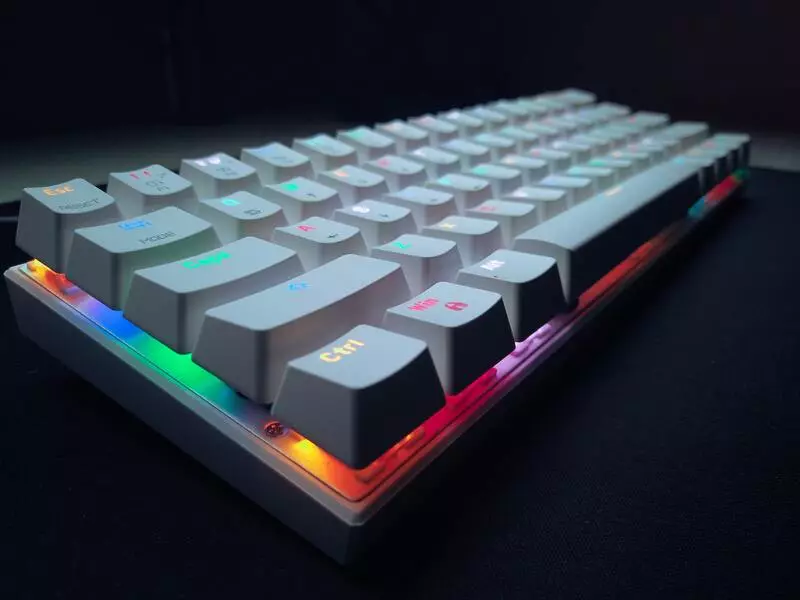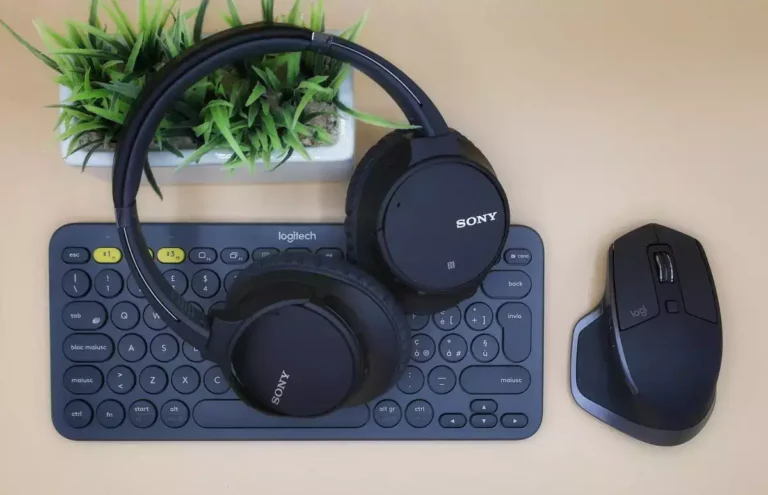Does QMK Support Bluetooth? (All You Need To Know About QMK)
This site contains affiliate links to products, and we may receive a commission for purchases made through these links.
While it may sound like an overstatement, QMK is one of the best firmware for mechanical keyboards. The open-source community, Quantum Mechanical Keyboard or QMK, centers around developing input devices for computers. But does QMK support Bluetooth?
QMK supports a variety of input devices, including mice, keyboards, and MIDI devices. It supports using a keyboard with Bluetooth though it has some limitations since it’s restricted to AVR-based chips.

QMK Explained | Keyboard Firmware
QMK or Quantum Mechanical Keyboard is a firmware that gives you a lot of power by making simple things easier and harder things possible.
It helps to detect button presses and then passes the relevant information to the host computer. As you build your customized keymap, you are able to create your own executable keyboard program for all the keys.
If you’re new to the term, QMK is similar to software running on your keyboard rather than the device connected to your keyboard.
Most mainstream and pre-built keyboards only allow software downloads for keyboard management, not for firmware updates. However, custom-built and pre-built mechanical keyboards do allow users to update the firmware while using software like the GUI.
READ MORE!
Are Bluetooth Keyboards Good For Gaming? (Solved)
One benefit of updating the QMK firmware is that the changes will be effective wherever you use your keyboard. This level of customization is not possible on most similar firmware.
You can map or remap each key to different functions using different actions, such as tapping or holding. QMK allows multiple layers with 32 layers and a highly efficient tap function.
You can also try the advanced features using the tapdance, whereby you use the same key with different actions, such as tap, hold, tap and hold, or tap twice.
Does QMK Have Support for Bluetooth?
At the moment, QMK support for Bluetooth is restricted to AVR-based chips. It supports RN-42 modules for Bluetooth 2.1.
Among recent BLE protocols, QMK directly supports only Adafruit Bluefruit SPI Friend. This is a Nordic nRF5182 chip that runs the Adafruit firmware and transmits data through the SDEP and SPI hardware.
If you are building a customized board using the SPI friend, the best would be to use the pin selection used by the 32u4 feather. However, you can modify the pin using specific defines in the cnfig.h options.
READ MORE!
Do Bluetooth Keyboards and Mouse Have Input Lag?
Another option is to convert a Bluefruit UART friend to an SPI friend though this does need some direct soldiering and reflashing to the MDBT40 chip.
Bluetooth keycodes are used when you have the option to select multiple keyboard outputs. At present, you can only use it to switch between Bluetooth and USB on a keyboard that supports both.
Pros of Using QMK
1. Better Layer System
Using QMK allows you to have a maximum of 32 layers with their own key layout. Additionally, you have the option to toggle layers or activate them temporarily.
2. Advanced Programmability
QMK also enables you to program a key to carry out any function, such as interacting with LEDs.
You can use one solid color to come on the display when a layer is active so that you can know very quickly which layer you’ve activated.
3. Open Source
Being open-source allows you to use features on the keyboard that are not supported currently by Obin’s firmware. With QMK being open source, you can do it yourself.
4. Evolved Tap Features
The tap dance feature available with QMK is one example of how evolved the QMK toolbox is.
You can use one key to perform a variety of features by using multiple mapping options. You can have setting options according to your personal preferences.
There are some cons too.
Cons of Using QMK
1. Initial Stages
Because QMK is still in its initial stages, there are some areas that still need improvements.
One such area is Bluetooth connectivity. However, with mature community support out there, the technology is doing quite well.
2. Not Fully Integrated Bluetooth
The keyboard works quite efficiently with QMK while using Bluetooth; however, some features don’t so far. One example is media keys that have not been ported completely to QMK while they work perfectly on native firmware.
You cannot control the mouse and the keyboard using Bluetooth. This is because the QMK port cannot override Bluetooth firmware and uses the default setting to use the last Bluetooth processor version flashed on it.
3. LED Logic & Split Application
The AP2 QMK port has different firmware for LED and applications. Due to this, some features become more complex, such as having dynamic effects.
This is because it requires serializing messages between the two firmware.
4. GUI-base Configuration Missing
Some GUIs or graphical user interfaces are available with QMK that will help you configure your keyboard without having to code directly.
However, the AP2 port on the QMK does not support these GUIs, which is why you have to be able to write code to customize your keyboard according to your requirements.
5. Not User-Friendly for Newbies
Because using QMK requires some degree of knowledge about basic programming skills and command lines, it is not user-friendly for everyone.
Should You Use QMK or Not?
QMK is quite amazing and having its functional version running gives you numerous options. However, you have to keep in view the fact that at the moment, the project is not user-friendly for newbies.
An alternative to QMK is Obinskit. It is quite powerful and very user-friendly. If you are new to mechanical keyboards, it may be a good idea to try Obinskit first.
It is an easier way of getting used to keyboard customization. Once you have a good understanding and greater clarity about what you expect from your keyboard, you can explore QMK.
If you are familiar with mechanical keyboards, go ahead with QMK. You will simply fall in love with how simple it is to use. The GUI is fantastic, and the Tap Dance feature is quite remarkable. One of the best features that most advanced keyboard users truly appreciate is the number of layers that it allows.
One certainty is that you will not go back to Obinskit once you’ve used QMK. I, for one, cannot see myself with a keyboard that cannot let me use both Numpad and navigation keys with my right hand.
Check out this article about The Pros and Cons of Buying a Wireless Keyboard (Explained).

Espen
Espen is the Director of ProPairing and has written extensively about Bluetooth devices for years. He is a consumer product expert and has personally tested Bluetooth devices for the last decade.






